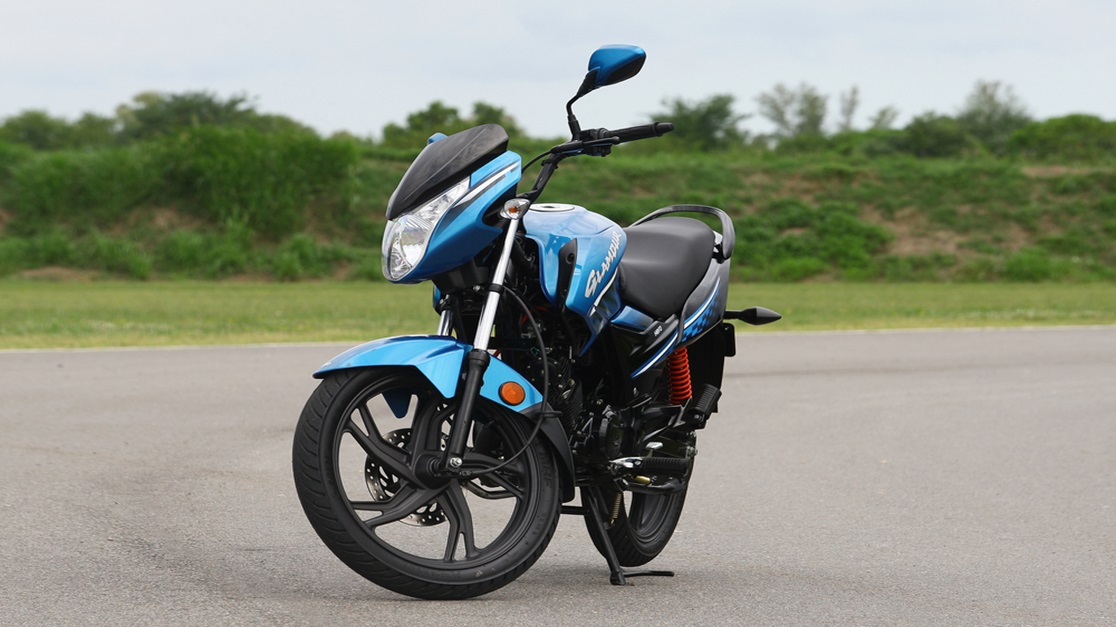How to Switch Banks for a Better Two-Wheeler Loan?
Disclaimer: The information mentioned herein is generic in nature. Ujjivan Small Finance Bank is not responsible for the accuracy of the information provided herein. Click 'Apply Now' to view our two-wheeler financing features & benefits.
July 04, 2025

In India, two-wheelers are not just a mode of transportation—they're a lifeline for millions, especially young professionals and those living in tier 2 and 3 cities. In fact, according to the Society of Indian Automobile Manufacturers (SIAM), India recorded over 15 million two-wheeler sales in 2022 alone, with a majority of buyers financing their purchases through loans. With such a high reliance on two-wheeler loans, it's crucial to secure the best deal. If you're not satisfied with your current lender’s terms or are seeking better interest rates, switching banks might be the smartest financial move.
Switching banks for a better Two-Wheeler Loan is not only a way to reduce your interest burden but also to secure better customer service, repayment flexibility, and add-ons like insurance or maintenance packages. Here’s a step-by-step guide on how to seamlessly make the switch and secure a more favorable deal.
Why Consider Switching Banks for a Two-Wheeler Loan?
The Indian financial landscape is highly competitive, with banks offering a range of loan products to lure customers. Here are some reasons why switching your lender can benefit you:
- Better Interest Rates: A slight reduction in interest rates can lead to significant savings over the loan tenure. Consider affordable interest rates to ease the burden of EMI.
- Favorable Terms: Some banks offer longer repayment tenures or lower processing fees, which can make your monthly EMIs more manageable. For example, Ujjivan SFB Chakra Loan (two-wheeler loan) comes with a repayment tenure of 48 months.
- Enhanced Customer Service: The quality of customer support varies significantly between banks. If you're unhappy with your current bank’s service, switching could mean better support and easier loan management.
- Prepayment Flexibility: Many banks have rigid prepayment penalties, but others offer more flexible options that can save you money if you plan to repay your loan early.
Steps to Switch Banks for a Better Two-Wheeler Loan
1. Review Your Current Loan Agreement
Before making the switch, carefully review the terms of your current loan agreement.
Check for:
- Prepayment penalties
- Foreclosure charges
- Processing fees
- Your outstanding loan balance
This will give you a clear picture of how much it will cost to exit your existing loan.
2. Research and Compare New Loan Offers
Take the time to compare loan offers from multiple banks. The most important factors to consider include:
- Interest Rate: Look for banks offering lower rates than your current lender.
- Tenure Flexibility: Some banks offer tenure up to 5 years, which could ease the burden of your monthly EMI.
- Processing and Foreclosure Fees: Lower fees can make a huge difference over time.
- Additional Benefits: Some banks offer perks like free insurance, zero documentation charges, or online application discounts.
3. Check Your Credit Score
Your credit score plays a significant role in determining the interest rate a bank offers. If your credit score has improved since you took your original loan, you're in a better position to negotiate lower rates with a new lender. In India, you can check your credit score for free from agencies like CIBIL, Experian, or CRIF High Mark.
4. Get Pre-Approved for the New Loan
Once you've selected a bank with better terms, apply for a pre-approval. This step will give you a clearer understanding of the loan amount you can avail, the interest rate you qualify for, and the processing fees involved.
Ensure you gather the necessary documents:
- Proof of identity (Aadhaar, PAN)
- Address proof
- Income proof (salary slips, ITR)
- Proof of employment
- Two-wheeler details
5. Foreclose Your Existing Loan
Once your new loan is approved, approach your current lender to foreclose your existing loan. Keep in mind that banks often take up to 15 working days to process foreclosure requests. Be prepared to pay any prepayment or foreclosure penalties as mentioned in your loan agreement.
6. Transfer the Loan to the New Bank
Once your foreclosure is complete, the new bank will disburse the loan to either your account or directly to your old lender. If you’ve chosen to transfer the balance, ensure all documentation is completed and that you receive a NOC (No Objection Certificate) from your previous bank.
Benefits of Switching Banks for a Two-Wheeler Loan
- Save on Interest Costs: Even a 1% reduction in interest can lead to thousands of rupees in savings.
- Better EMI Management: With favorable terms and tenure, your monthly EMI becomes more manageable.
- Improved Customer Experience: Switching to a bank with better customer service can enhance your overall experience, leading to fewer hassles.
Final Thoughts
Switching banks for a better two-wheeler loan can result in lower EMIs and significant savings over time. By following these steps and being mindful of the terms, you can make the best financial decision for your two-wheeler financing.
Ujjivan SFB offers Chakra Loan - an affordable two-wheeler loan that offers up to 95% financing of the on-road price of the vehicle.
Disclaimer:
The contents herein are only for informational purposes and generic in nature. The content does not amount to an offer, invitation or solicitation of any kind to buy or sell, and are not intended to create any legal rights or obligations. This information is subject to updation, completion, amendment and verification without notice. The contents herein are also subject to other product-specific terms and conditions, as well as any applicable third-party terms and conditions, for which Ujjivan Small Finance Bank assumes no responsibility or liability.
Nothing contained herein is intended to constitute financial, investment, legal, tax, or any other professional advice or opinion. Please obtain professional advice before making investment or any other decisions. Any investment decisions that may be made by the you shall be at your own sole discretion, independent analysis and evaluation of the risks involved. The use of any information set out in this document is entirely at the user’s own risk. Ujjivan Small Finance Bank Limited makes no representation or warranty, express or implied, as to the accuracy and completeness for any information herein. The Bank disclaims any and all liability for any loss or damage (direct, indirect, consequential, or otherwise) incurred by you due to use of or due to investment, product application decisions made by you on the basis of the contents herein. While the information is prepared in good faith from sources deemed reliable (including public sources), the Bank disclaims any liability with respect to accuracy of information or any error or omission or any loss or damage incurred by anyone in reliance on the contents herein, in any manner whatsoever.
To know more about Ujjivan Small Finance Bank Products Visit:"https://www.ujjivansfb.in"
All intellectual property rights, including copyrights, trademarks, and other proprietary rights, pertaining to the content and materials displayed herein, belong
to Ujjivan Small Finance Bank Limited or its licensors. Unauthorised use or misuse of any intellectual property, or other content displayed herein is strictly prohibited and the same is not intended for distribution to, or use by, any person in any jurisdiction where such distribution or use would (by reason of that person’s nationality, residence or otherwise) be contrary to law or registration or would subject Ujjivan Small Finance Bank Limited or its affiliates to any licensing or registration requirements.
FAQs
1. Can I switch banks for a two-wheeler loan mid-tenure?
Yes, you can transfer your two-wheeler loan mid-tenure, but ensure to check for any prepayment or foreclosure penalties.
2. Will my credit score be affected by switching banks?
Switching banks itself doesn’t impact your credit score, but multiple loan applications within a short period might.
3. How much can I save by switching my two-wheeler loan?
This depends on your new interest rate, loan amount, and tenure. You can use online EMI calculators to estimate your savings.
4. Is switching banks a lengthy process?
While the process takes a few weeks, it’s straightforward if you have the required documents and foreclose your existing loan on time.
5. Can I negotiate interest rates with my new bank?
Yes, if you have a good credit score and a clean repayment history, you can negotiate lower interest rates with the new bank.
Latest Blogs

eSIM Scam in India: I4C Warns Mobile Users About Rising Fraud – How to Stay Safe
The Indian Cybercrime Coordination Centre (I4C), a wing of the Ministry of Home Affairs, issued a strong warning to mobile users about the rapid increase in eSIM fraud in India.

How to Link PAN with Aadhaar: Step-by-Step Guide & Consequences of Not Linking
Linking your Permanent Account Number (PAN) with your Aadhaar is no longer just a best practice.

Annual Information Statement (AIS): A Complete Guide for Stress-Free ITR Filing
India’s tax season is in its final stretch.

ITR-1 (Sahaj) Restrictions: Income Sources Not Allowed & Filing Rules
With just a few days left before the 15 September 2025 deadline for filing Income Tax Returns (ITRs) for Assessment Year (AY) 2025-26, many taxpayers are rushing to submit their forms online.

GST Rate Cut on Electronics: What It Means for Consumers and Retailers
India’s Goods and Services Tax (GST) system has entered a new era with the rollout of GST 2.0, effective from September 22, 2025.





